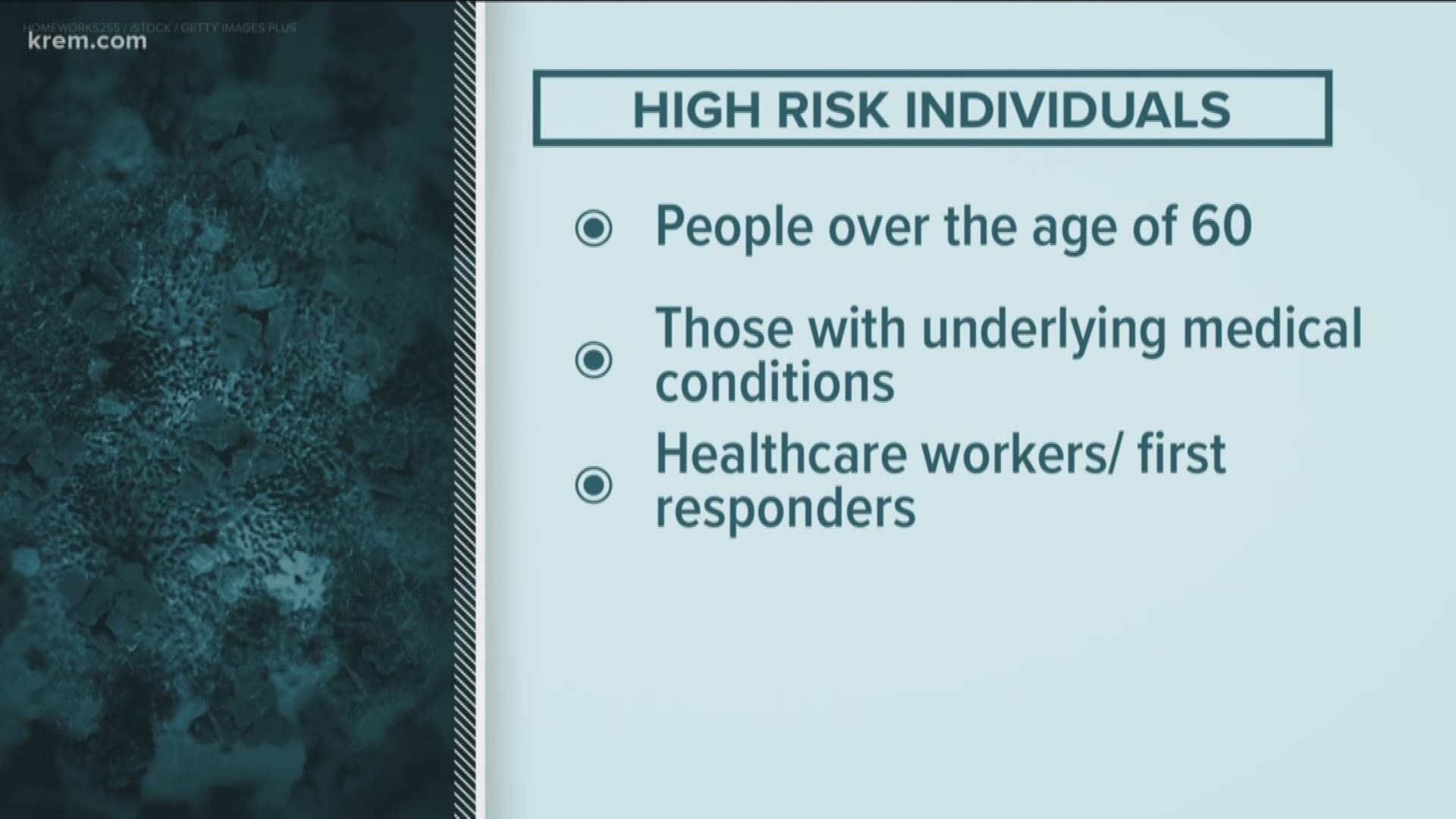SPOKANE, Wash. — A drive-thru testing site for the 2019 novel coronavirus (COVID-19) at the Spokane County Fairgrounds is one of two in eastern Washington.
The Spokane Regional Health District announced over the weekend that it would be easing up on its requirement that patients must get a referral before visiting the site.
Here are the answers to some questions that Spokane County residents may have about the testing site.
Do you need a doctor's referral to visit the testing site?
People do not need a doctor's referral to visit but they are encouraged to call their healthcare provider first if they are experiencing symptoms, said Kelli Hawkins with the Spokane Regional Health District.
A provider may tell someone to go to a clinic or emergency room for treatment rather than a testing site if they are experiencing severe symptoms.
Can those who live outside of Spokane County be tested?
Hawkins said medical workers are not turning anyone away from screening. Someone who lives outside of Spokane County can be tested.
Who will be tested?
People who are considered high-risk are among those who will be tested at the site if they are exhibiting COVID-19 symptoms.
Symptoms of coronavirus include fever, coughing, trouble breathing and tiredness, according to the World Health Organization. People infected with the virus may also develop pneumonia, severe acute respiratory syndrome (SARS), kidney failure and death, according to the WHO.
High-risk individuals include people who are over the age of 60 years old, those with underlying medical conditions, or healthcare workers and/or first responders who have cared for someone who may have the virus. .
Kelli Hawkins with the Spokane Regional Health District says those who don't fall into the high-risk category and are experiencing symptoms similar to those of the coronavirus are advised to take the following steps:
- Stay home
- Rest, eat nutritious food, and stay hydrated
- Protect others in your household by isolating yourself, washing your hands often, practicing good cough and sneeze etiquette, and cleaning high touch surfaces in your home.
Hawkins said those who are not in high-risks groups should monitor their symptoms if they experience those similar to COVID-19. If they persist or get worse, they should call their healthcare provider, who may recommend an emergency room visit.
How many people have been tested so far?
Humphreys said the test site has seen about 350 people since its soft opening on Thursday. On average, about half of the people who have visited have been tested.
Saturday was the slowest day, with about 67 people who were screened, Humphreys said. The number of people who were tested is unclear.
On Sunday, 157 people visited the test site and 55 — about one-third — were tested for COVID-19.
Monday has been the busiest day so far, with about 180 people visiting the test site, Humphreys said. She is unsure of how many people have been tested so far.
Humphreys said those running the site believe its capacity is about 280 cars per day.
What is the screening and testing process like?
Vitals are taken at the test site, and workers check for a fever and other symptoms along with asking questions about whether the person falls into a high-risk group, Hawkins said. The site is not turning people away but that doesn't mean everyone is getting tested.
Humphreys added that the screening and subsequent testing process itself takes about 20 minutes from start to finish.
What is the turnaround time on test results?
Humphreys said turnaround time could vary depend on where tests are sent. But healthcare providers say they have already received some results from tests on Thursday.
She added that tests are being sent to the University of Washington's laboratory in Seattle and LabCorps.

